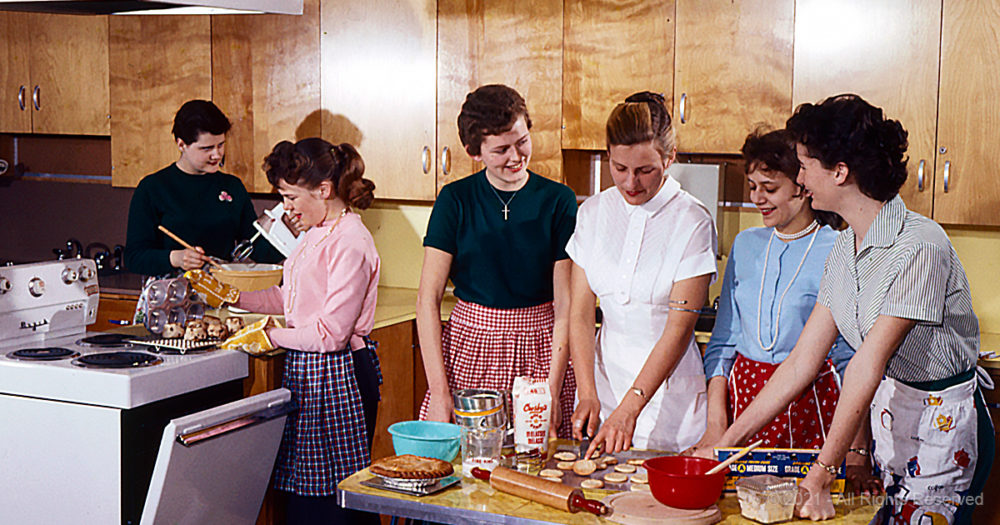Reflecting on the nostalgic charm of 1950s Home Economics classes offers a unique glimpse into a bygone era of education.
These classes, emblematic of mid-20th-century schooling, were more than just a curriculum component; they were a rite of passage for many students, especially young women, preparing them for the domestic responsibilities of adult life.

In the 1950s, Home Economics was a staple in many American schools. It epitomized the societal norms and expectations of the time, focusing heavily on teaching skills that were considered essential for homemaking. The curriculum was a comprehensive blend of cooking, sewing, budget management, and even elements of child care and home decoration. These classes were not just about imparting practical skills; they also served as a medium for instilling values like responsibility, organization, and the importance of family life.
Cooking lessons in Home Economics were an adventure into the culinary trends of the 1950s. Students learned to prepare classic dishes that were popular in American households. These cooking sessions were more than just following recipes; they were lessons in nutrition, meal planning, and the art of entertaining guests. The pride and satisfaction of successfully baking a perfect apple pie or mastering the family’s favorite casserole recipe were experiences cherished by many students.
Sewing was another cornerstone of the Home Economics curriculum. Students learned the intricacies of handling fabrics, patterns, and sewing machines. The ability to mend clothes, stitch a button, or even create an entire outfit from scratch was a practical skill and a creative outlet. The sewing classes often culminated in fashion shows, showcasing the students’ handiwork and creativity.

Budget management was a critical aspect of the curriculum, reflecting the economic realities of the time. Lessons in frugality, wise shopping, and managing household finances were common. These skills were invaluable, especially in an era when many families were still recovering from the economic impacts of World War II and the Great Depression.
Home Economics in the 1950s also touched on aspects of child care and home management, preparing students for future roles as parents and homemakers. The classes provided a foundation for managing a household, emphasizing the importance of a well-kept home and the responsibilities that came with it.
This nostalgic reflection on 1950s Home Economics is more than just a look back at a curriculum; it’s a reminder of an era when education was closely aligned with societal expectations. While some aspects of these classes may seem outdated today, they hold a special place in the hearts of those who experienced them. They represent a time when the lessons learned in school were directly applicable to the everyday lives of students, preparing them for the specific roles they were expected to play in society.
Leave a Reply